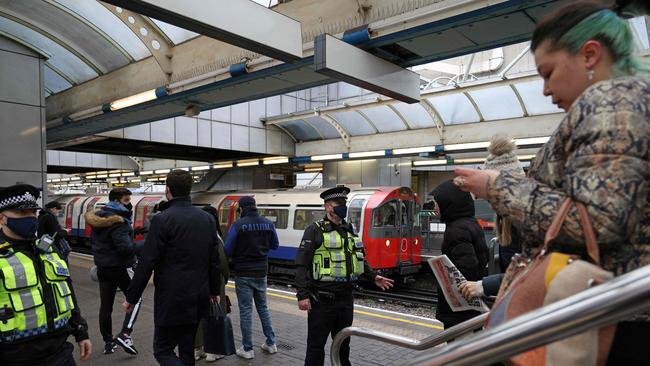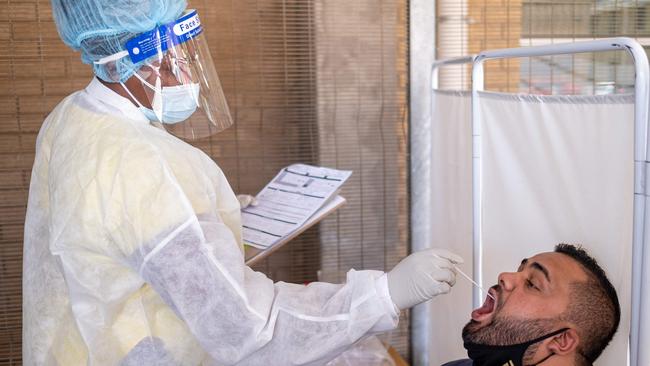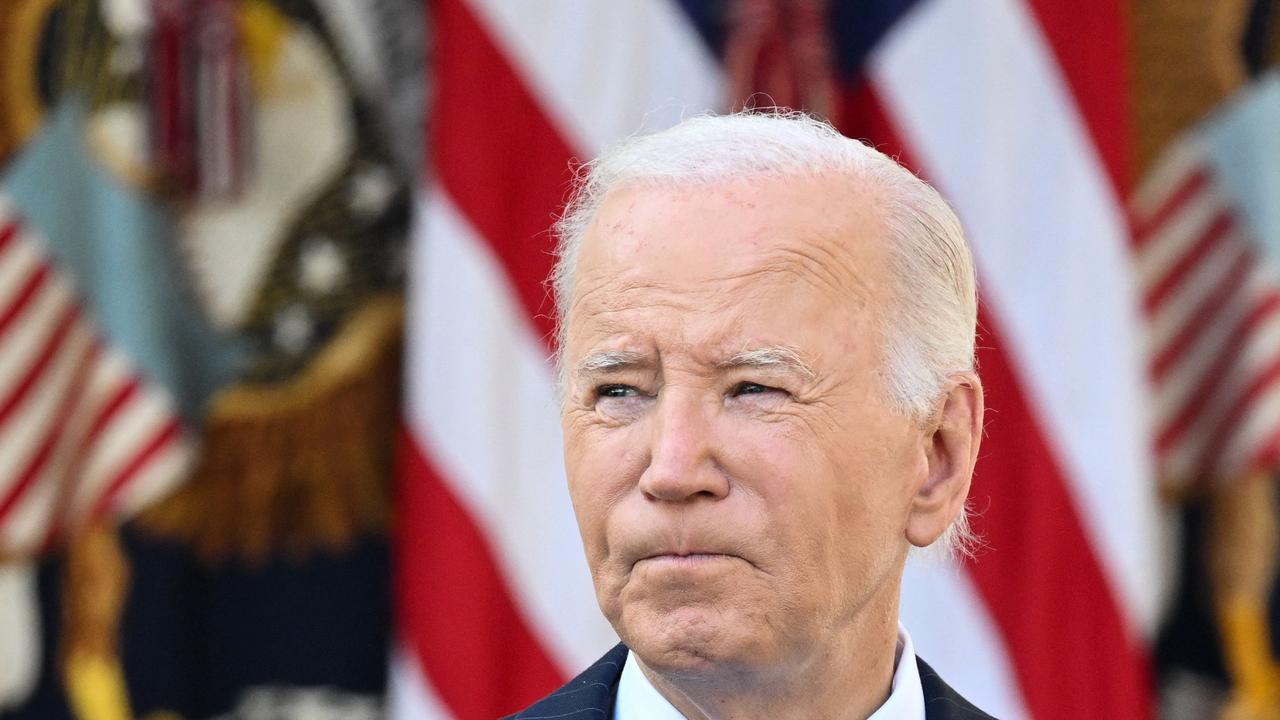Omicron proof we need to live with Covid, not hide under the doona
Australia, with its highly vaccinated population, should step off the treadmill that will see us going in and out of restrictions forever, writes James Morrow.
Opinion
Don't miss out on the headlines from Opinion. Followed categories will be added to My News.
The good news about the new Omicron strain of coronavirus is that its symptoms seem to be, in most cases, pretty mild — doctors who have treated patients say sufferers don’t even lose their sense of smell.
The bad news is that Omicron also appears to cause widespread cases of proportion loss, often coupled with moderate to severe over-reaction leading to panic.
This is not to say that authorities should not continue to fight the pandemic and adapt their responses accordingly. They should.
But in a country that is among the most vaccinated in the world — better than the US, EU, UK, or Israel — and with what Health Minister Greg Hunt called Monday “one of the most well prepared and strongest hospital systems in the world”, it is time we start thinking about stepping off the Covid treadmill.


After having enjoyed a simulacrum of normality for the past month or two, hey presto, another variant, another call for new restrictions, more demands to “crush” the virus rather than live with it, and the return of the precautionary principle that would not have let early man invent the wheel without filing an 800-page environmental impact statement.
This is not, as they say, sustainable.
To be fair, the Morrison government has been measured compared with the response of some other nations, which shut themselves off from the world completely.
But with the new strain circulating in Europe, blocking travellers from a handful of African countries seems more about symbolism than substance.
So too with the plan to push out the reopening of borders to citizens of other counties by two weeks.
If you’ve been overseas and picked up Omicron, then it shouldn’t matter what sort of passport you hold.

The same with making returned travellers, who will have had a Covid test before getting on the plane home, self-quarantine for three days.
Obviously there are politics at play here, which demand leaders be seen to be “doing something”, even if the threat is unknown or the actions inconsequential.
The Prime Minister had to act lest Australia’s hermit Premiers accuse the government of inaction.
Scott Morrison also knows that Anthony Albanese will be keen to make Covid a big part of his election campaign, given the Opposition Leader is hammering the case for purpose-built quarantine centres unlike anything being contemplated by any other nation in the free world.
Although given the escape of three internees from Howard Springs on Wednesday, one wonders whether the ALP’s designs will have to be updated to include guard towers and kennels for the German shepherds.
And, to be frank, the media has no small role to play here either.

Driven by scary-sounding reports of super-spiky mutant proteins and the like, much of the press has been eager to smash the fear button, breathlessly reporting every new case.
Celebrity alarmists who made their name at the start of the pandemic have again seen their error-strewn but terror-spreading social media posts amplified by commentators who should know better.
A long post by American Twitter nutritionist Eric Feigl-Ding that was torched by other doctors for inaccuracies was re-tweeted by the ABC’s Paul Barry who, ironically, hosts a show devoted to ferreting out media inaccuracies.
And along with the World Health Organisation — so deeply in the pockets of China that it skipped over the Greek letter Xi when naming the new variant — many of the early scare stories around Omicron and its mutations were pushed by London’s Imperial College.

Readers with long memories will recall that this was the same Imperial College whose deeply flawed Covid doomsday models were developed with computer code so flawed and scrambled that one Google engineer called them “unusable for scientific purposes”.
But while it is too soon to say that Omicron is no threat at all, there is so far no evidence that it is more dangerous — only that it has learned, like viruses have since the start of time, to spread more successfully.
South Africa, with a largely unvaccinated population and high rates of HIV, has not seen a surge of deaths from Omicron, even as cases have spiked.
Last week the head of South Africa’s Medical Association, Dr Angelique Coetzee, said that most people infected with Omicron had “very mild” symptoms.
Epidemiologist Salim Abdool Karim told the New York Times on Tuesday, “we have no red flags that have been raised so far.”
This is just what we would expect.
As University of California San Francisco virologist Dr Monica Gandhi recently explained to another American news outlet, “It’s really hard for a variant to become more transmissible and more virulent.”
If we are going to truly live with Covid, that means understanding that along with colds and flus this thing is with us forever.
Very likely we will have good and bad Covid years, as we do with influenza.
The way to fight it, and live with it, will be through jabs and medications, not panic and fear.





